Ken and I are just back from Norway and one of the most amazing wedding celebrations/weekends we have ever been a part of. There are some Norwegian themed posts to come, but in the meantime, Ali Berlin, Contributing Editor, to the rescue! Take it away!
___
My dear friend Kate Seward is a cool, brilliant captor of beauty. Street style photographer, pro blogger and wordsmith, her way of witnessing the world stirs my insides. Kate and I met through our mutual BFF Carrie when we all lived in San Francisco, and I was instantly intrigued by her choices: lifestyle, clothing, books, words, perspective and humility (yes, I believe humility is a choice). Her talent is profound, her self-expression exquisite.
Kate started her blog The Styley in March 2011, and since then the New York Times has featured 25 of her streetstyle photos.
Since I am a wannabe amateur photographer (Bixby, my dog, is my main subject), I went straight to KS with my questions on how to snap better. Thought we could all use a few tips so here are her responses, along with some images which are individually labeled with the Hipstamatic film, lens and flash used on each one.
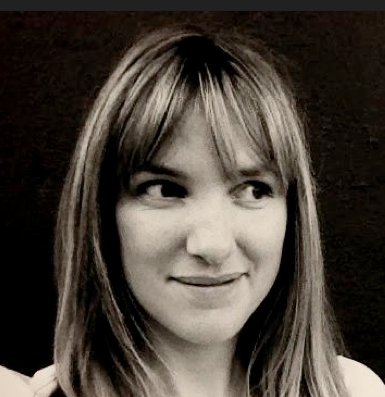
Kate Seward, Mistress of Light and Lens.
AB: Favorite camera apps?
KS: One of my favorite all-time camera apps is Hipstamatic, which mimics the qualities that film has. In fact, my two favorite cameras are my film camera and my iPhone—I actually don’t really like the results I get with my DSLR, and these days I use it as little as possible. As for my iPhone, at points I’ve shot almost exclusively with Hipstamatic, although I’m now experimenting with the native iPhone camera as well as an app called VSCOCAM, which is fantastic for editing as well as handy for shooting. My favorite lenses in Hipstamatic are Loftus (all-time favorite) and Tinto1884. Lately I’ve also been liking Americana. My favorite films are Blanko Freedom 13, Ina’s 82, Robusta, DC, and C-Type Plate. For black and white I like D-Type Plate and BlacKeys SuperGrain. As of yesterday I think I might do a little experimenting with one of Hipstamatic’s first film types, Ina’s 1969. I often cut off the borders when I’m editing, though.
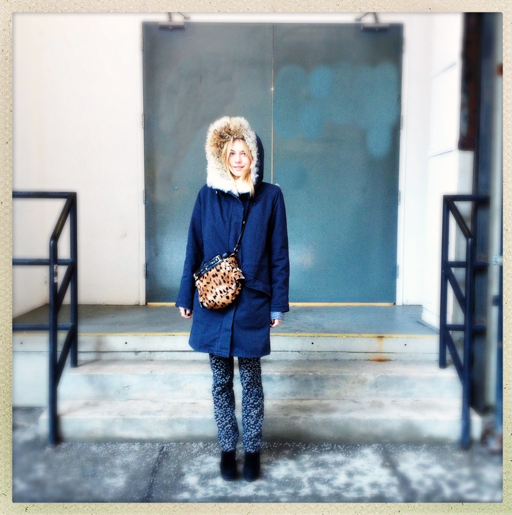
Camille: Loftus lens, Ina’s 82 film
AB: Favorite flashes?
KS: I try to avoid shooting with flash, so unfortunately I don’t have much advice on this one.
AB: Best combinations of the above?
KS: Oh god, so many. Basically, the two lenses I mentioned above go well with all of the films I listed. I’m constantly switching them around, although recently I’ve been focusing on Blanko Freedom 13, because it doesn’t have a border and I’ve been doing this new thing on my Instagram feed where I’m adding another border in a different app, so I don’t want to be dealing with two borders, if that makes any sense. A combination that I haven’t played with for a long time but rediscovered yesterday during a hazy sunset on the beach is the Jane lens and Ina’s 82 film.
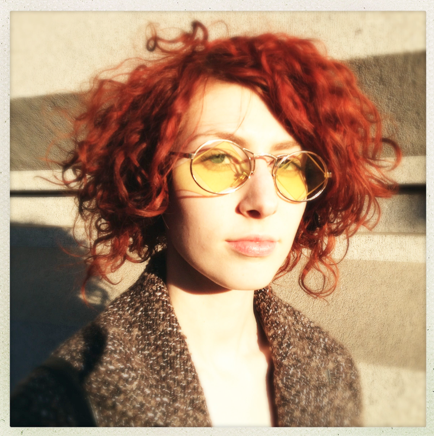
Claire: Loftus lens, Ina’s 82 film
AB: How do you make the photos look so stunningly professional and artistic?
KS: That you would describe my photographs as looking professional and artistic is so awesome I can barely handle it. Nearly everything is about light. If you’re using a camera app like Hipstamatic—and by the way, all of the photographs in this article were shot on an iPhone, with Hipstamatic—you have to figure out which films and lenses work best at which times of day. The best way to do that is to play around with the app as much as you can, and in as many different environments, light-wise and location-wise, as you can. As far as the native camera is concerned, it’s actually very good in bright, even harsh light, like at mid-day, which is a very hard time to shoot.
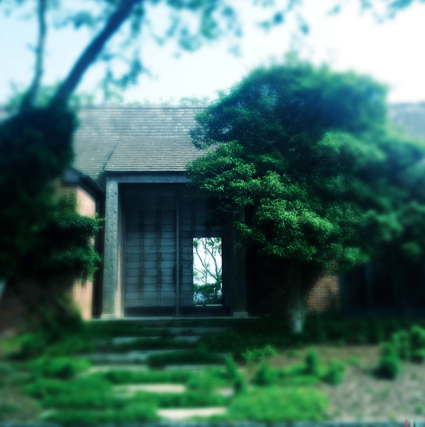
East Hampton House: Tinto 1884 lens, Blanko Freedom 13 film
AB: How do you work with light?
KS: Light is my number one consideration. I look up at the sky and figure out where the sun is, unless, of course, it’s overcast or rainy. I didn’t know to do that for a long time, like a ridiculously, almost embarrassingly long time. I used to just try to avoid shadow, which is an ass-backward way to do it, and which I now realize is not always necessary or desired. One day I was talking to my younger brother about not really understanding light, and he said, “How about you just focus on light?” And basically that’s what I’ve done ever since.
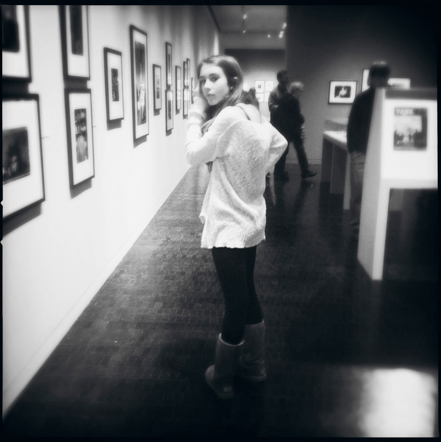
Girl at Radical Camera: Originally Loftus lens, DC film, but then I used another app (Camera+ I think) to make it black and white
AB: How do you avoid shadows?
KS: By figuring out where the light is before I do anything. But like I said before, sometimes shadows can be cool, depending on the story you want to tell. You can make them work for you, but again, as with pretty much everything, you need to experiment. As for avoiding shadows when you’re shooting indoors using tungsten and fluorescent light? I’m still working on that one.
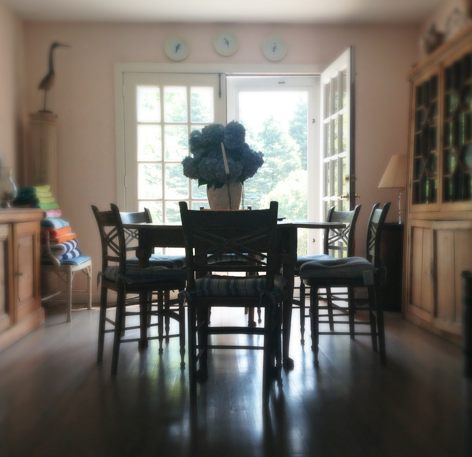
Hydrangeas at Wild Goose Lane: Loftus lens, Blanko Freedom 13 film
AB: How do you choose a background when shooting people?
KS: For me, photographs are all about telling a story. My background is as a writer—I have an MFA in creative writing—so creating a narrative is important to me. At the same time, if a person is the focus of your photograph, you can’t have so much scene-setting going on that you distract the viewer from your subject. When I see a person, something about what they’re wearing or how they’re standing or their hair or face is what draws me to them, and from that moment forward, I’m kind of spinning a story about that person in my mind. I base the background on that story, while also taking the light into consideration.
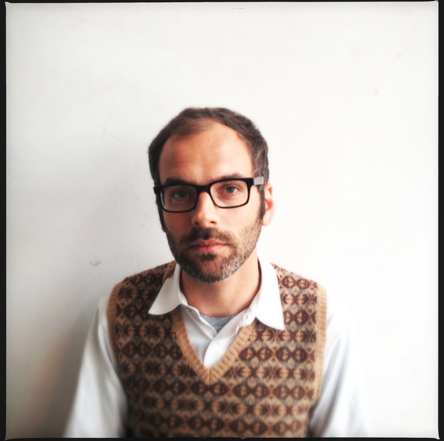
Josh Faught: Loftus lens, DC film
AB: How do you approach people when you’re doing a street style shoot?
KS: Generally, I’ll tap them lightly on the shoulder, which I realize is easier for a woman to do than a man. Then I’ll say something like: “Excuse me, I really love your outfit [bag, shoes, headband, whatever] could I take a picture of you?” Most people are flattered, but there are definitely a few that think I’m insane. The most important thing is not to take it personally when someone says no. That’s still a struggle for me.
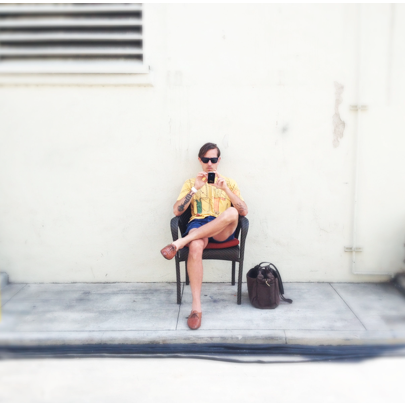
Paris Photo: Loftus lens, Blanko Freedom 13 film
AB: How did you learn how to photograph so beautifully?
KS: That’s such a nice compliment I’m going to be high on it for the rest of the month, seriously. Maybe even the rest of the summer. I don’t know, exactly. I took one class in high school, two in college, and then one three hour workshop two years ago when I started shooting again after like a fifteen year break. I feel like I basically taught myself by getting out there and doing it. I love walking around taking pictures, or even just being at home and taking pictures. This past week I was in Southampton staying at a friend’s and I took pictures of everything that interested me: the beds, the grounds, the light on a bowl of salt, the people there…anything and everything. I try to shoot every day for some period of time, even if it’s only ten minutes, because I believe it’s important to practice my craft on the regular. In fact, I get really irritated and grumpy if I don’t take at least one picture every day, no matter how awful that picture is. The hardest thing is trying to stick to my own vision, to shoot the things that I want to shoot, as opposed to the things I think other people want to see (like on Instagram).
AB: Kate and I recently hosted an iced tea party at my house, and here are a few of her shots from that day. She makes everything come alive and reveals it as art, exactly how I love to see the world:
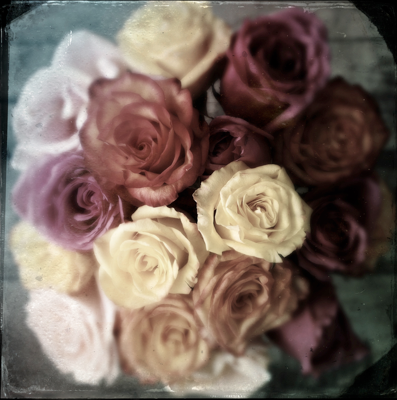
Roses: Tinto 1884 lens, C-Type Plate film
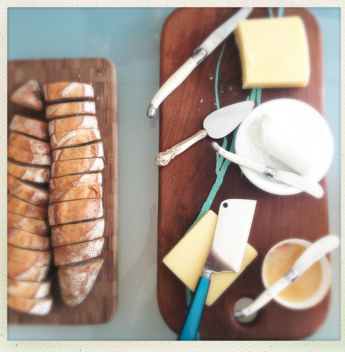
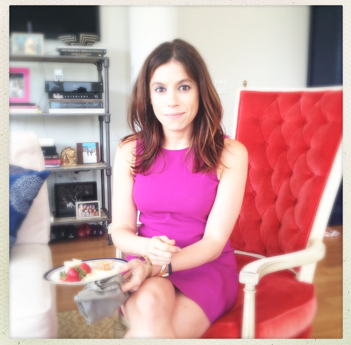
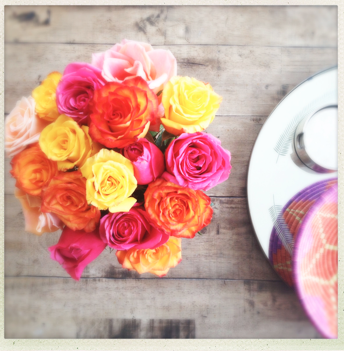
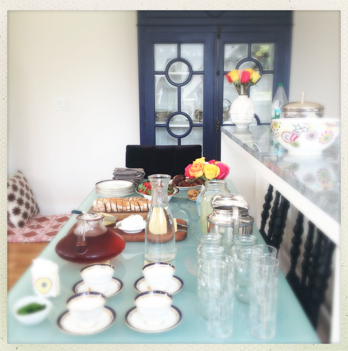
AB: How much does your instinct play into it, versus learned talent/training?
KS: I don’t mean to discourage anyone, but I think it’s pretty much all about instinct. But I do believe you can take even the slightest visual instinct and develop it into something really amazing by practicing as much as you possibly can. Of course you should know some basics about light and composition, but most of that you can look up on the Internet. It’s also good to know how to use your camera. Last year someone told me to read the manual for the camera I bought five years ago. For some reason that had never occurred to me before. The experience was enlightening.
That said, I love shooting with my iPhone because there’s not much to learn how to use. Taking photographs with it is ridiculously easy, and that allows you to focus on what are, to me at least, the really important elements of a photograph: light, composition, and subject matter. In college I was constantly photographing my friends and the stuff we did, and most of the time I used a point-and-shoot that my parents bought me when I was a kid. Interestingly enough, when I moved from San Francisco to New York last year I found that camera and it still works! But the point is that I didn’t have a so-called “real camera” until my senior year, when a bunch of my friends pooled their money to buy me a Pentax K-1000, which I also still have and use, for my 21st birthday. I firmly believe that the best camera is the one you have with you, the one with which you feel the most comfortable. Many bad pictures have been taken with really expensive DSLRs, and many great photographs have been taken with an iPhone. Just poke around Instagram and you’ll see what I mean.
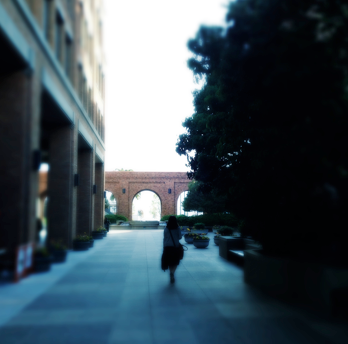
SF Arch: Tinto 1884 lens, Blanko Freedom 13 film
AB: How do you decide what to share publicly or keep private?
KS: Some work just isn’t as good as other work. Learning how to edit yourself is really important. And sometimes what I put out there isn’t the picture that’s going to go down in the annals of art history, but I post it because it makes me laugh, or it’s of a person or place that I love. Basically, you just have to like what you’re putting out there and feel good about it, and not care what anybody else thinks.
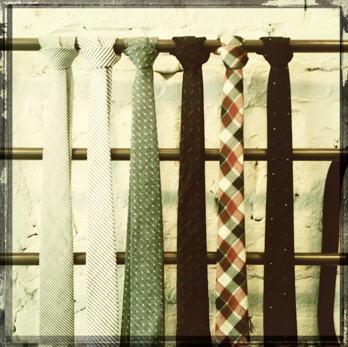
Ties: Melodie lens, Cano Cafenol film
AB: How do you feel about being in front of the camera versus behind it?
KS: I absolutely hate having my picture taken. I will only do it under extreme duress.
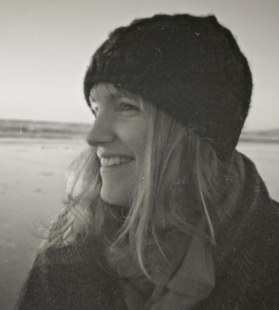
Kate Seward (credit: Ben Rhau)
Blog: www.thestyley.com, Instagram: @Thestyley http://instagram.com/thestyleytoo#, Twitter: @TheStyley https://twitter.com/TheStyley, Facebook: https://www.facebook.com/pages/The-Styley/194647207238518
Have a great rest of the week!
Ali Berlin, Contributing Editor of Josie Girl Blog
<3 Hipstamatic
Hipstamatic seems great….although I am personally a sucker for instagram.
Great tips, and I love Kate’s work!
She is super talented.